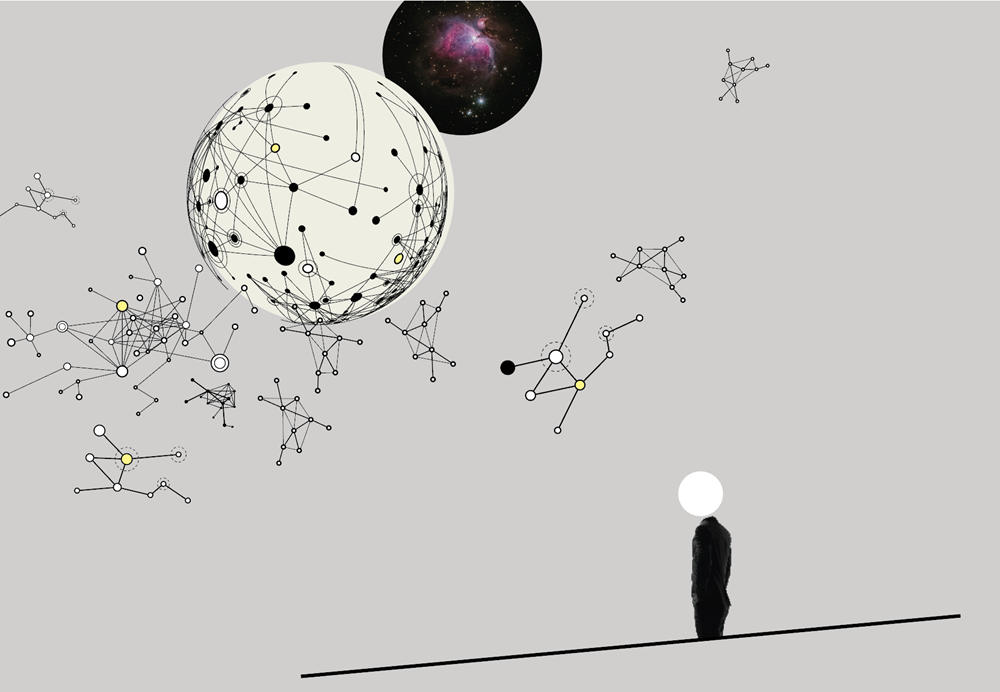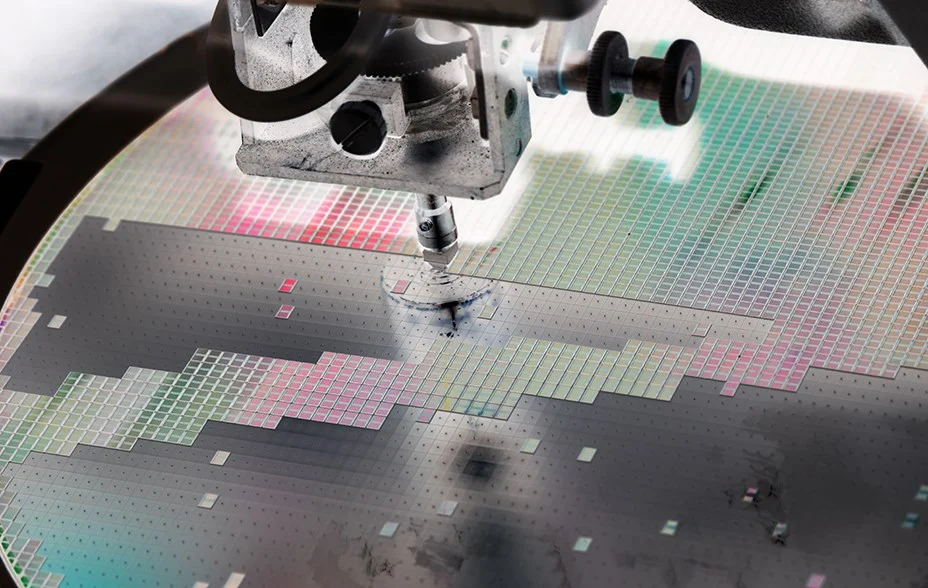Key Points
- The current market environment is offering many opportunities to the patient investor
- The structural drivers of the economy are changing and the stock-market winners of next decade will be different to those of the last
- This Research Agenda reflects on the past and muses on the future
Introduction
As growth investors, it’s essential for us to stand back and look at the bigger picture. Tuning out market noise allows us to spot opportunities. Diligent research lies at the heart of that process.
We published our first Research Agenda in 2013, making this the 11th version we have shared. As has often been the case, several of the areas included in this current iteration – such as the Infrastructure Upgrade and New Growth Frontiers – build on topics we introduced in previous agendas, and which have helped shape the portfolio. This is natural. Change is constant, and our work doesn’t neatly conclude every December.
The market environment has changed dramatically over the past two years. The impact of this swing on performance has been significant. Several topics included in this year’s agenda reflect on this change, recognising that the winners of the next decade may be different to those of the last. We must cast our net wide in the search for businesses possessing the right qualities to thrive in this changed environment. We must also look to reflect on what has happened and learn from recent experiences.
At a time when anxiety is rife and markets volatile, it is vital that we remain reward-seeking. Our Research Agenda helps us focus our time and attention on the crucial task of determining where these rewards might come from. Perhaps this year, more so than in previous years, its role is more vital than ever.

Increased return from patience
During periods of fear and uncertainty, time horizons shrink. For investors this often means a stronger focus on the here and now. This is a natural reaction, but we must resist if we are to capture the great growth opportunities of the future. It is at times like these that patience and a long-term outlook are most valuable. A ship may appear safe in the harbour, but that is not what it is built for.
Patience is providing us with a heightened advantage in two areas. The first covers secular growth companies facing near-term cyclical pressures. We believe market myopia is directing disproportionate attention towards near-term demand, thus missing the potential for long-term earnings power. This is evident, for example, in the semiconductor industry and the ecosystem surrounding the US housing market. Our work here has been intensifying and has already resulted in the purchase of the semiconductor filtration and materials business, Entegris, and the US swimming pool supplier, Pool Corp.
Secondly, the market’s current intolerance of expenditure ignores the value of ongoing investments by high-growth businesses. As growth investors, we believe it is essential for our companies to invest for the future. However, in these uncertain times, even highly robust businesses are being penalised for expansionary outlays. One example of this trend is Amazon. Having owned the business for over a decade, we are accustomed to bouts of scepticism towards its capital plans, and we remain highly optimistic about the longer-term prospects for both its retail and cloud computing businesses. We believe Amazon’s scale advantages are strengthening, yet its share price has been punished. We have taken advantage of this mismatch to add to our holding. Similar opportunities are emerging where the market is unfairly penalising ambition and failing to appreciate the potential rewards.
In each of these cases, near-term trading may continue to be challenging. We are not likely to be precisely correct with our timing. We are, however, determined to look beyond the prevailing fear, to focus on where long-term growth prospects remain strong, and to use patience to our advantage.


Infrastructure upgrade
The world’s infrastructure needs to be rebuilt and rewired to cope with more people and an energy mix with more renewables. Population growth and urbanisation mean more people will live in more concentrated pockets. A more volatile climate will stress the dependability of the existing capital stock. And, as the world gets older, demand will naturally press against supply. The built environment needs to be fit for purpose, but in many parts of the world, it is not.
In the United States, the world’s richest country, 43 per cent of public roads are in ‘poor’ or ‘mediocre’ condition. A water main breaks every two minutes. Much of the electricity grid is more than 40 years old. Capital investment has been too low for too long. This underinvestment cannot continue. This year, we intend to spend time thinking through these moving parts, particularly companies that stand to benefit from a widespread infrastructure upgrade. Expanding our thinking from the Great Energy Transition (a focus of previous Research Agendas) to the broader canvas of Infrastructure Upgrade opens our minds to a wider range of potential beneficiaries of this rewiring. This includes businesses such as the power management company Eaton, a recent purchase for the portfolio.
As Steve Jobs famously said, “simple can be harder than complex.” The energy transition is inherently complex. New energy systems require decarbonisation on an industrial scale and digital transformation to match. The world needs to produce and consume energy in a smarter way. Those companies that can simplify this complexity, and bridge the gap between raw technology and the end user, will be the winners.

New growth frontiers
The past decade was a golden period for consumer technology. The era of ubiquitous connectivity heralded by the arrival of smartphones enabled a new generation of consumer platform companies, characterised by powerful network effects and increasing return to scale. These companies digitised and transformed large swathes of the consumer economy, including media, retail, social, entertainment and gaming, and they have emerged as the new leaders of the economy. As these companies have grown from underdogs to incumbents, we must acknowledge that their best investment days are largely behind them.
In an ideal world, innovation should seek to create, not destroy. It should look beyond the confines of existing industries and seek to solve unsolved problems. Viewing innovation through this lens, entrepreneurs should not merely look to displace existing markets but to create new ones. They should not just seek to serve customers better, but to serve the underserved or unserved. Innovation should not be a zero-sum game of shifting market shares from incumbents to disruptors.
As we look forward to the next decade, we must look towards new growth frontiers. If the growth engines of the last decade were the internet, mobile and software, the growth engines of the next decade will be based on data and artificial intelligence. These technologies are creating a bridge between the digital and the physical world. We already have self-checkout lanes in supermarkets and self-driving cars on the road. These are nothing more than robots becoming more intelligent over time. But if we have robots in retail stores and on the roads, why not on factory floors, hotel receptions, or hospital surgeries? Today’s internet is largely 2-dimensional, and artificial intelligence is in the cloud. The next phase of the internet will be 3-dimensional, and artificial intelligence will migrate from the cloud to the physical world.
Who are the likely beneficiaries of these new growth engines? Which applications will be transformed? How will this affect broader society? These are just some of the questions we hope to investigate this year. While we don’t have the answers yet, we know we must approach this task with an open mind. These businesses may look very different to the winners of the past. In some cases, we need to throw out our old mental models and construct new ones. The journey of discovery is exciting, and we look forward to sharing it with you.
The increasing importance of the supply side
Our core task is the identification and patient, engaged ownership of companies with the potential to deliver superior but under-appreciated earnings growth.
Since the nadir of the Global Financial Crisis in 2009, demand has been the primary driver of profit growth. We were sufficiently early to recognise several companies benefiting from this demand-led expansion, companies which went on to create significant value for shareholders. We continue to look for opportunities driven by growing demand, but as we look to the next five years, we are increasingly convinced that supply-side factors will become increasingly important in driving wealth creation. As such, we plan to deepen our insights and enrich our mental models for thinking about the supply side, while continuing our search for potentially fruitful investment ideas.
Our initial work has identified some promising lines of enquiry:
- Which companies have substantial dry powder to deploy? We start with a portfolio of companies with significantly lower debt levels than the market*. This latent competitive advantage was suppressed when interest rates were close to zero. With interest rates on the rise, companies with strong balance sheets run by counter-cyclical capital allocators have a unique opportunity to turbocharge their long-term earnings power by deploying capital when peers cannot.
- Where are the opportunities for industry consolidation? Companies that can reinvest their cashflows at high rates of return over long timeframes can generate powerful compound returns for shareholders. These serial acquirers can also improve their industries by reducing competition. Some go on to become better businesses as they diversify into adjacent markets. These companies can deliver high rates of return with less individual risk.
- Which companies are able and willing to cannibalise themselves via share buybacks? An ongoing de-equitisation model can create enormous wealth over time if the company trades persistently at modest multiples of profits or cashflows. Buying back lowly-rated shares permanently increases the per-share value for remaining shareholders.
We think the growth from these supply-side drivers will be bigger and less-widely recognised than growth from their more glamorous demand-side cousins. Further research should uncover a greater number and diversity of companies with superior earnings per share growth. The supply-side growth drivers should also be less correlated with broader economic conditions as each company acts independently. That is a valuable prize to aim for and goes to the heart of our core task.

Time to reflect
An ongoing theme of every Research Agenda is the drive for continuous learning and improvement. This has taken many forms in the past, from refining how we use mental models to building our expert networks and seeking alternative sources of insight. The goal is to improve our processes and increase our ability to deliver for our clients. After a bruising period of performance, we owe it to them to reflect on what has worked, but also consider mistakes we may have made and ensure we learn from them. We remain resolutely committed to our process and style, and while some mistakes are inevitable in our business, there is always room for betterment.
We intend to reflect broadly and honestly. Have we made avoidable errors? Do we have biases that can and should be eliminated? One area of focus is correlations within the portfolio. We have long held the view that volatility is not something to be feared – in fact, some deviation from an artificial benchmark is the only way for genuinely active managers to improve long-term investment returns. That said, perhaps we should have been more wary of the rising correlation among companies with similar growth characteristics, even where their business fundamentals were unrelated. We are actively pursuing this area and have already started working with our Investment Risk team to strengthen our process.
It is said that we do not learn from experience – we learn from reflecting on experience. Or, as one of our colleagues tells their children, mistakes are toothless, provided we can own them, fix them, learn from them, and move on. We have already begun this process.
Conclusion
Our task is to find businesses that possess the right elements of vision, ambition, and the ability to execute, enabling them to generate superior returns for shareholders. This Research Agenda aims to help us focus on areas where the potential rewards for companies with these qualities are most significant. It helps direct us towards areas where the pace of change is quickening, and where the opportunities for successful businesses to create or capture significant value may be expanding or poorly understood. The importance of this endeavour can be forgotten during volatile times, particularly as markets reach for certainty as they so often do today. This Research Agenda serves as a guide, to help us remain focused on the themes and companies that are most likely to generate meaningful investment returns over the next decade and beyond.

